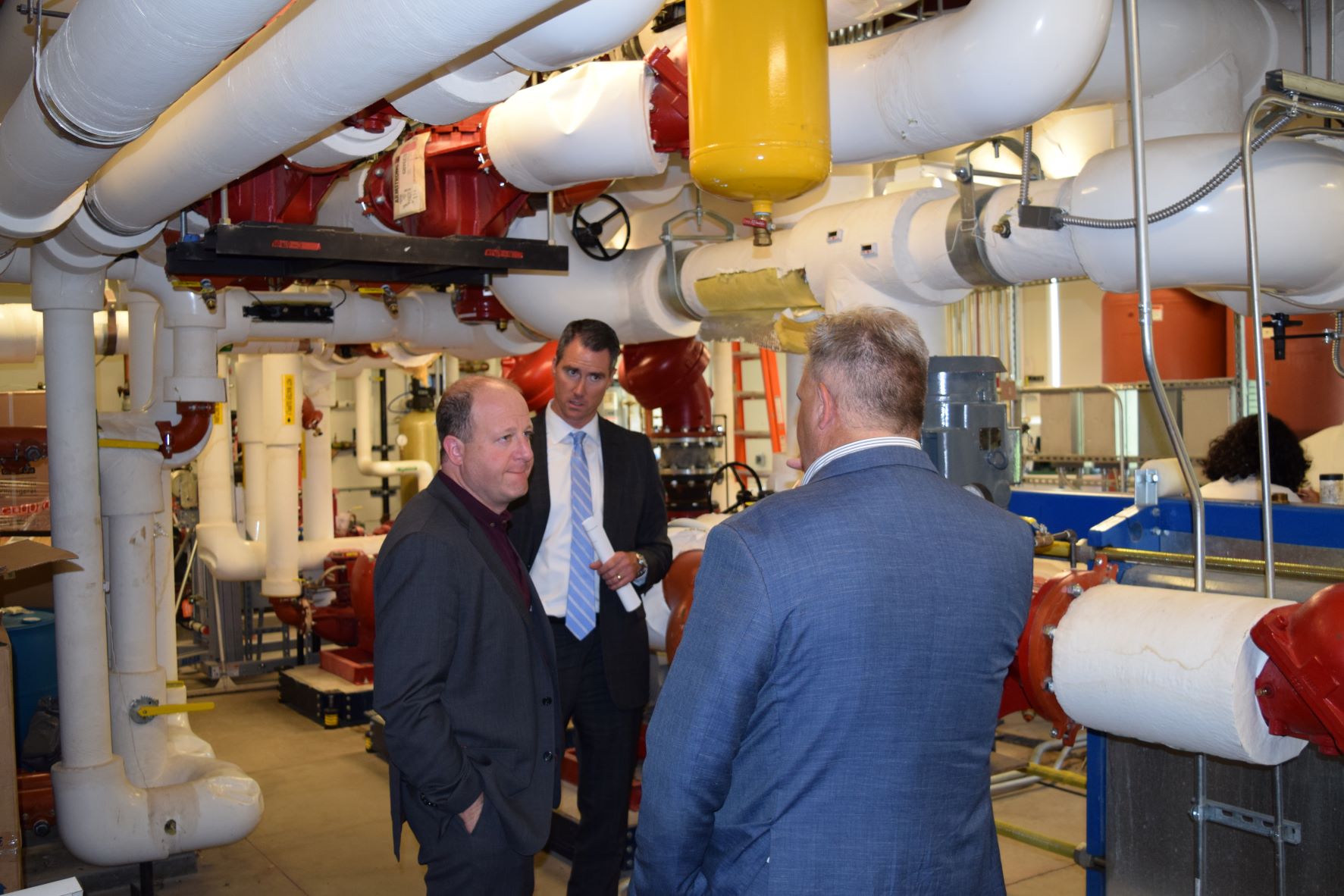
As part of Colorado Gov. Jared Polis’ WGA Chair Initiative, The Heat Beneath Our Feet, the Western Governors’ Association will be conducting tours of geothermal facilities throughout the region to explore the various market and policy factors that affect the development and deployment of geothermal technologies, and evaluate strategies to scale those technologies across the West.

On Oct. 6, Will Toor, the Executive Director of the Colorado Energy Office, and Kent Marsh, the Vice President for Capital Planning Sustainability and Campus Operations at CMU, joined WGA Policy Advisor Steven Emmen for a webinar where they discussed the benefits of the system, and identified opportunities for its expansion throughout the region.
“One of the things that I think is really appealing about this system from an overall system level,” Toor said, “is as we use more electric heat pumps to heat buildings, those are going to increase the peak demand for electricity on cold days in the winter and that potentially poses challenges that we’re going to need to solve on the electric generation side. But, because these ground source heat pumps are always working with a constant temperature, the peak demand on the coldest days is much, much lower than air source heat pumps.”
Using less than half of the electricity required by a traditional HVAC system, the geo-exchange system at CMU currently heats and cools 70% of the buildings on campus (1.2 million square feet), reducing the University’s carbon footprint by nearly 18 metric tons per year, and saving $1.5 million a year on energy costs – savings that are passed on to the students.
According to CMU President, John Marshall, every student’s tuition was discounted by 2% this year due to the system’s efficiencies. With extremely minimal maintenance required to operate the system and a useful service life of over 60 years, those savings will continue long into the future.
It’s been so successful, the University is not only expanding the system to all of the new construction on campus, but it’s also working with the city of Grand Junction to explore options for expanding the system into the surrounding community.
“This is an exciting example of community-scale geothermal,” Gov. Polis said. “Once we build this great geothermal heating and cooling system, we can leverage it to help extend the benefits and savings to the community.”
(Gov. Polis proposed funding to help CMU expand its facilites during his 2023 State of the State Address following the tour).
To aid in the expansion of geothermal energy use, Toor outlined a new $12 million grant program with the Colorado Energy Office that supports individual buildings adding geothermal heat pumps, as well as the planning and implementation of larger district heating geothermal systems similar to the systems at Colorado Mesa University.
“The Inflation Reduction Act,” Toor added, “is, for the first time, treating geothermal on an even basis with other renewables on the electricity side. It’s also creating tax credits that may be very useful for geothermal heat pump deployment.”
Geothermal heating and cooling systems, of course, are just one way to take advantage of the West’s vast geothermal potential. Over the next eight months, several Western Governors will be hosting webinars to showcase the capabilities of different geothermal technologies at:
Sign up for WGA's weekly newsletter, The Round Up, or follow us on Twitter, Facebook, or LinkedIn for more information on the webinar series, including future dates and speakers.